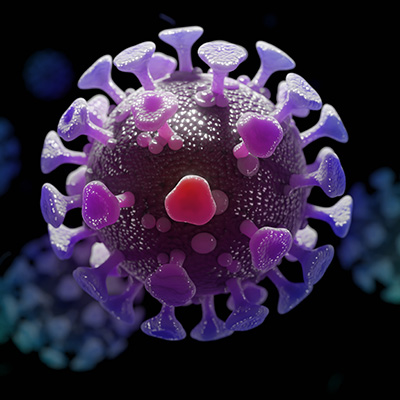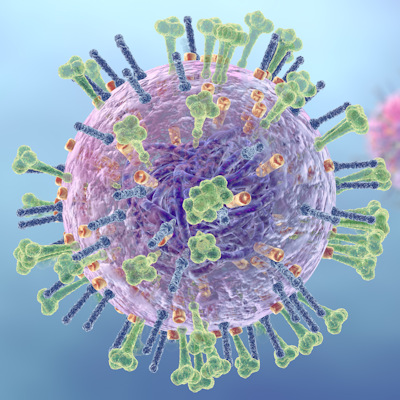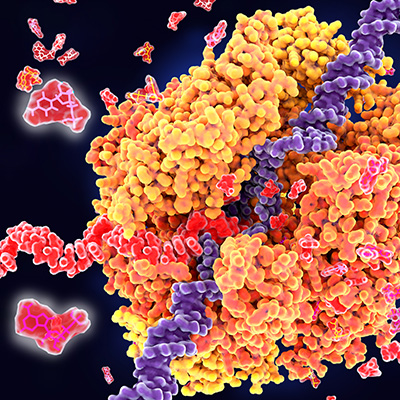November 7, 2022 -- Collaborative research between the University of Oxford and Diamond Light Source has revealed detailed influenza replication structures. The study, published November 3 in the journal Trends in Microbiology, furthers understanding of the virus' adaptation to different hosts, and may lead to new antiviral drugs.
Influenza can become pandemic when it jumps from animals to humans. The current influenza A viruses are likely the evolutionary progeny of the 1918 pandemic virus, which caused between 50 and 100 million deaths worldwide.
The new research is crucial to understanding how a cellular protein (ANP32A) partly accounts for host-jumping barriers. By studying which regions of the viral polymerase interact with ANP32A, the researchers determined that a mutation in avian influenza's polymerase may allow it to interact with human ANP32A and permit it to infect human hosts.
The influenza virus stores its genes in RNA and the virus synthesizes its own RNA polymerase to replicate. Researchers found that the viral polymerase also regulates the timing of replication and transcription -- the first step in protein synthesis.
Researchers used x-ray crystallography, small angle x-ray scattering, and cryo-electron microscopy (cryo-EM) for structural characterization of the viral polymerase in near-atomic detail, revealing that the single polymerases pair together to form "dimers." They hypothesized that single RNA polymerases carry out transcription early in infection and switch to replication only after forming dimers, following the production of additional copies of the polymerase.
Cryo-EM revealed that one polymerase in the dimer replicates the viral genome while the other appropriates ANP32A to coat the newly formed RNA in viral proteins, sheltering it from immune detection.
"These studies help us to identify and validate targets for drug discovery," Ervin Fodor, PhD, Oxford virology professor and corresponding author, said in a statement.
Copyright © 2022 scienceboard.net










